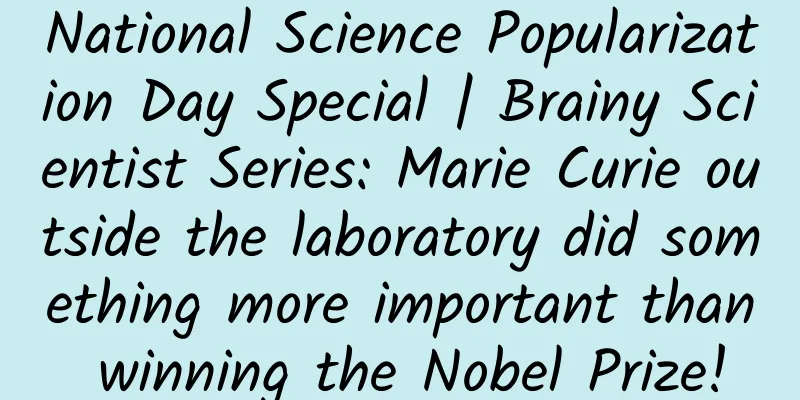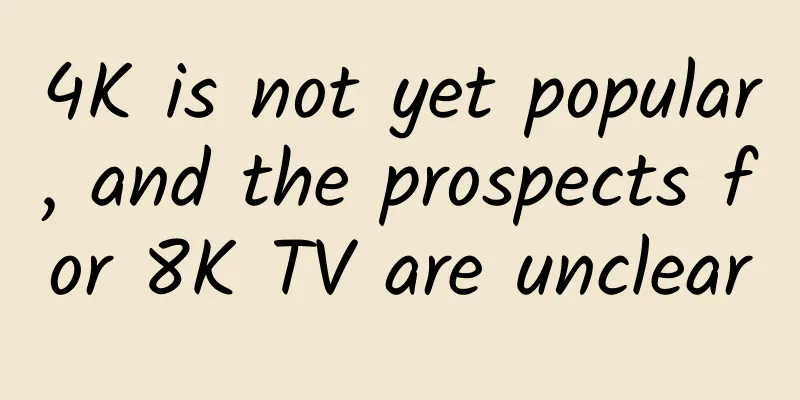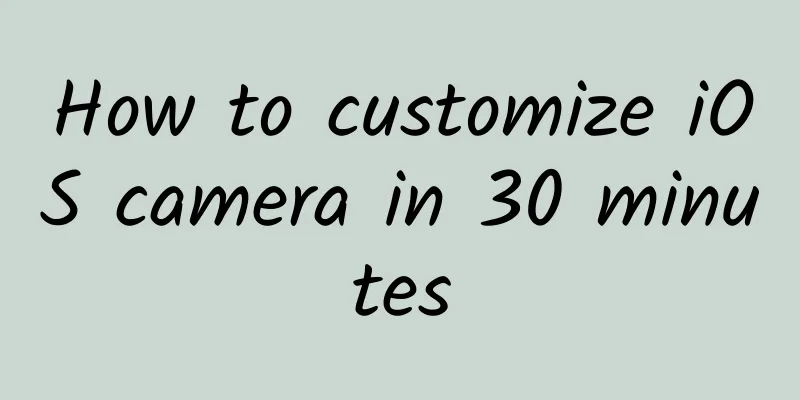National Science Popularization Day Special | Brainy Scientist Series: Marie Curie outside the laboratory did something more important than winning the Nobel Prize!

|
People know Marie Curie because of her husband, Mr. Curie, or the Nobel Prize and radium. But few people know what she did when the First World War suddenly broke out. Marie Curie (November 7, 1867 - July 4, 1934), also known as "Madame Curie", whose full name was Maria Skłodowska Curie. She was born in Warsaw and was a famous French-Polish scientist, physicist and chemist. Mary was born in an ordinary middle school teacher's family in Poland at that time. She was the youngest child in the family. When she was 7 years old, her eldest sister died of typhus, and when she was 10 years old, her mother died of tuberculosis. The departure of her relatives hit Mary hard and she became an atheist. The blow and poverty of her family did not make her give up her studies. She graduated from high school with excellent grades at the age of 16. Unfortunately, because she was a girl, the Polish university rejected her. But she never gave up. She worked as a tutor to save money while studying by herself through books. In 1891, 24-year-old Maria met Pierre Curie at the Sorbonne University in Paris. They fell in love and admired each other. In July 1895, the two officially got married in Paris. After marriage, the Curies discovered the element "polonium" and "radium" together. The word "radioactivity" was also coined during their research. In 1903, the Curies won the Nobel Prize in Physics for their research on radioactivity. But three years after winning the Nobel Prize, her husband Pierre died unexpectedly. The position originally reserved for Pierre Curie in the Department of Physics at the University of Paris was passed to Maria, making Marie the first female professor at the University of Paris. In 1911, she won the Nobel Prize in Chemistry for successfully separating radium. In the same year, she attended the Solvay Conference, the most important conference in the world of physical chemistry research, and became the only female scientist at the conference. In 1914, the First World War broke out and many men were drafted into the army and went to the battlefield. Maria immediately realized that her scientific research would be affected. She put all the radium in a lead container, organized the research materials, and took a train to Bordeaux, a city in southwestern France, 375 miles from Paris. She placed the radium in a bank safe in Bordeaux, planning to take it out after the war. The war put her research career on hold, but she never thought of escaping the war. Marie decided to join the fight. She first considered financial assistance. The French government was raising funds for the war, so Marie took her Nobel medal to the bank to donate it to the government. When she learned that the bank refused to melt the medal, she took out the Nobel prize money and bought war bonds. In order to help France end the war as soon as possible, Madame Curie closed her laboratory and decided to use her maximum technological skills to work towards an early end to the war and strive to save more people in the war. Unable to continue her research on radium during the war, she turned her attention to other radioactive substances such as X-rays. She found that the bloody and cruel war created countless casualties. Many of them missed the best treatment opportunity because they were not clear about their injuries. Bringing X-rays to the battlefield would greatly solve this problem. During World War I, the hospital's radiation equipment could not be transported to the battlefield, and injured soldiers or civilians could not be taken to the hospital for treatment in time. "X-ray equipment is difficult to transport, so why not use a car to transport it to the front line!" Maria thought about how to solve the problem - she did an addition problem: integrating the car, X-ray equipment and photography darkroom together. She also used the car's generator to start the car and provide electricity for the equipment. In this way, the "radiation car" that can be flexibly moved and used was born. Military doctors can use it to help complete the operation. The first "radiant car" played an important role in the Battle of the Marne (1914). After tasting the sweetness of the "radiant car" assisted treatment, Maria began to think about how to make more of them. She used her scientific influence to persuade many wealthy Parisian women to donate vehicles out of their own pockets, and soon she had 20 of them. The soldiers did not realize that the person who treated them had won two Nobel Prizes. With the help of her 17-year-old daughter Irene, Marie Curie operated the equipment in an orderly manner. The soldiers also jokingly called the "radiation car" "Little Curie". But another problem arose: there were too few people who knew how to use and operate the "radiation car"! Maria and her daughter began to recruit and train women to become professional operators of the equipment. The training courses they set up included basic knowledge of physics, electromagnetism, basic theory of X-rays, as well as anatomy and photographic processing. When the first batch of trainees finished their studies and went to the battlefield, more people came to learn. In total, about 150 women were trained. Later, Mary thought that it was not enough to just train and modify the "radiation vehicle", and more workstations should be built. In this way, Maria also supervised the construction of 200 radiology rooms in field hospitals behind different fronts. Because there was no time to improve the safety protection of X-ray equipment, workers were exposed to X-rays for a long time and were often burned. Maria wrote instructions on the safe use of X-rays. Marie Curie was collecting radon* in her laboratory when the armistice was declared in 1918. The French government did not realize at the time that her X-ray vehicles and radiology front had saved millions of French soldiers; it was not until 1934, when Marie Curie died from long-term exposure to radiation, that the French government awarded her a medal. For a woman who could stand out in the scientific community in the 20th century, these actions were definitely not simple. She had experienced hardships and successes. She was also slandered in her middle age and was labeled the "Polish slut". When the war came, she chose to save lives in the war instead of using radiology to make weapons, which was enough to prove her greatness. While Marie Curie's application of radiology was developed in the war, it also gave mankind a mirror to reflect on war. |
<<: Why are there no meteorites in Earth's craters? Could someone have taken them away?
>>: There are less than 50 cases in the world! How rare is this golden blood type?
Recommend
Full of tricks? Exploring the meaning behind iPhone "X"
Although the world predicts that Apple will relea...
Dell Inspiron 12 is not only about changing your mindset, it's also about being online and on standby.
In recent years, the emergence of a large number ...
App Store data analysis for beginners of APP promotion
[[147097]] There are a lot of data in the AppStor...
Why does Weijing dare to "touch into porcelain" Xiaomi?
Two months later, Xiaomi TV finally brought the p...
In information flow promotion, how can you let users quickly understand your product? Just 2 steps!
When users are unable to fully understand the pro...
Balcony vegetable planting guide | Vegetables that can be grown without seeds
Recently, many people’s friend circles have been ...
China Academy of Information and Communications Technology: In the first quarter of 2022, the domestic 5G access downlink rate ranked Shanghai at 462.93Mbps, ranking first
Recently, the China Academy of Information and Co...
Tu Shou'e: A pioneer in the development of Chinese rocket technology | The childhood of the founder of the "two bombs and one satellite"
Tu Shou'e, an expert in rocket design, is one...
Lenovo's new flagship product 710S supports 418. How does Suning create Double 11 in the home appliance 3C field?
"We will take the exclusive launch of Lenovo...
How much does it cost to attract investment through the Aksu Property Mini Program?
How much does it cost to attract investment with ...
Bilibili barrage conquers Taobao: the strong penetration of otaku culture
When I opened Taobao on the morning of December 1...
12 tips to attract new users!
Introduction: User operations are actually divide...
Analysis of the operation of private e-commerce package cards
Nowadays, if you want to build a brand, you can&#...
Xiaohongshu Enterprise Account Operation Strategy!
01 Confusion in the operation of Xiaohongshu corp...
How to activate the massive Qianchuan delivery on Douyin?
On April 9, Douyin's Juliang Qianchuan was of...









